Ivan Čuk
Editorial
Roman Farana, Petra Janezckova, Jaroslav Uchytil, Gareth Irwin
EFFECT OF DIFFERENT HAND POSITIONS ON ELBOW LOADING DURING THE ROUND OFF IN MALE GYMNASTICS: A CASE STUDY
Yoshie Motoshima, Akira Maeda
KASAMATSU VERSUS TSUKAHARA VAULT
Mercedes Vernetta Santana, Águeda Gutiérrez-Sánchez, Jesús López-Bedoya
RECIPROCAL TEACHING OF GYMNASTIC LINKS IN HIGHER EDUCATION
Andrea Ferreira João, José Fernandes Filho
SOMATOTYPE AND BODY COMPOSITION OF ELITE BRAZILIAN GYMNASTS
Amanda Batista Santos, Maria Elisa Lemos, Eunice Lebre, Lurdes Ávila Carvalho
ACTIVE AND PASSIVE LOWER LIMB FLEXIBILITY IN HIGH LEVEL RHYTHMIC GYMNASTICS
Blaž Lešnik, Vanja Glinšek, Milan Žvan
CORRELATION BETWEEN GYMNASTICS ELEMENTS KNOWLEDGE AND PERFORMANCE SUCCESS IN YOUNGER CATEGORIES OF ALPINE SKIING
Anton Gajdoš
SHORT HISTORICAL NOTES III
Thomas Heinen, Linda Henning, Damian Jeraj
NEW BOOKS
Ivan Čuk
Editorial
Dear friends,
Four months have passed and seven new articles are in front of you. In addition to presenting Anton Gajdoš's Historical Notes, we are also inviting you to attend two international scientific conferences about gymnastics and to read one new book. International Scientific Conference: Sport, Health & Education – Complementary Approach to Gymnastics will be held 18 -20 June 2015 at Gdansk University of Physical Education and Sport in Poland. For more information please visit their home page http://www.v4gymnastics.awfis.net/. A brief report will appear in our October issue. The second conference, SIGARC, will be held in Sao Paolo, Brazil in October this year. The IV International Seminar on Competitive Artistic and Rhythmic Gymnastics had very good speakers and very high scientific contribution in the past. Please visit their web site for more details https://ivsigarcen.wordpress.com/.
The first article in the current issue is by Roman Farana, Petra Janezckova, Jaroslav Uchytil from the Czech Republic and Gareth Irwin from United Kingdom. They researched effects of the hand position on elbow loading during the round off. As the round off is a widely performed element in different gymnastic disciplines and is in a sense of health workout, it is important to minimize the loads.
The second article also refers to biomechanics. It is written by authors Yoshie Motoshima and Akira Maeda from Japan and is related to the first article. They compared the Tsukahara and the Kasametsu vault in kinematic variables (both vaults use the round off). No main differences were found which underlines the need to take another look at the Code of Points.
The third article comes from Iran. Vahid Saleh explores the relationship between floor exercise landing errors, anthropometric characteristics, and balance abilities in young gymnasts. With simple motor tests it is also possible to predict more successful landings.
The forth article by Mercedes Vernetta Santana, Águeda Gutiérrez-Sánchez, Jesús López-Bedoya from Spain provides those among us who run university gymnastics courses with interesting information on how to upgrade our work. Coaches can also benefit from this article as it provides a deeper understanding of the gymnast's experience.
Andrea Ferreira João and José Fernandes Filho of Brazil contribute an article about the somato type and the body composition of elite Brazilian gymnasts. Personally, I hope we will eventually have more articles of this type and be able to collect data from all over the world in our joint database.
Portuguese - Brazilian team of Amanda Batista Santos, Maria Elisa Lemos, Eunice Lebre, and Lurdes Ávila Carvalho researched active and passive lower limb flexibility. Their most important finding is that gymnasts are asymmetrical in the left and the right leg flexibility. Coaches should pay more attention to a symmetrical load and to gymnast's motor abilities to preserve their health.
The last article is from alpine skiers Blaž Lešnik, Vanja Glinšek and Milan Žvan of Slovenia. They explore the relationship between the knowledge of gymnastics and success in alpine skiing among young Slovene skiers. It seems that gymnastics is an important sport for skiers and can improve their skiing results.
Finally, Anton Gajdoš wrote for Short Historical Notes II a bio of three excellent gymnasts: Takashi Ono,Jack Gunthard and Eva Vechotva-Bosakova. Just to remind you, if you quote the Journal: its abbreviation on the Web of Knowledge is SCI GYMNASTICS J. I wish you pleasant reading and a lot of inspiration for new research projects and articles.
Roman Farana, Petra Janezckova, Jaroslav Uchytil, Gareth Irwin
EFFECT OF DIFFERENT HAND POSITIONS ON ELBOW LOADING DURING THE ROUND OFF IN MALE GYMNASTICS: A CASE STUDY
Elbow lesions are a potential reason for ending a gymnastics career, and presents a real concern for coaches, scientist and clinicians. Previous research has focused on female gymnastics and as such the aim of the current study was to investigate key elbow joint injury risk factors including impact forces, elbow joint kinetics, and kinematics during different round-off techniques in male artistic gymnastics. An international level active male gymnast performed 15 successful trials of a round-off from a hurdle step to back handspring with three different hand positions (parallel (5), T-shape (5) and reverse (5)). Synchronized kinematic (3D-automated motion analysis system; 240 Hz) and kinetic (force plate; 1200 Hz) data were collected for each trial. Effect-size statistics determined differences between each hand position. The key conclusions were, the T-shape technique reduces vertical, anterior-posterior and resultant ground reaction forces. Differences in elbow joint internal adduction moment and elbow joint compression force indicated that the T-shape technique may prevent elbow joint complex overload and reduces potential of elbow injuries.
Keywords: biomechanics, gymnastics, round-off, upper limbs, injury prevention
Yoshie Motoshima, Akira Maeda
KASAMATSU VERSUS TSUKAHARA VAULT
In the gymnastics vault, many male gymnasts presently perform vaulting of the Kasamatsu type in competitions. The purpose of this study was to clarify the characteristics of the vaulting motion of the Kasamatsu vault in comparison with the Tsukahara vault. Six male college gymnasts performed the Kasamatsu and Tsukahara vaults. Their vaulting motion was captured by the 3-dimensional optical motion capture system MAC3D. For both the Kasamatsu and Tsukahara vaults, horizontal velocity of the center of mass decreased, vertical velocity increased, and angular momentum was produced in the board contact phase. In addition, horizontal and vertical velocity decreased in the vault contact phase. However, no significant difference was observed between both vaults. The contribution of the upper limbs to angular momentum about the center of mass was significantly higher for the Kasamatsu vault than that for the Tsukahara vault at vault takeoff. These results suggest that the turn during the Kasamatsu vault was performed with rotation of the lower limbs being suppressed and angular momentum being maintained using the upper limbs.
Keywords: biomechanics, kinematics gymnastics, lower limbs, upper limbs
Vahid Saleh
THE RELATIONSHIP BETWEEN FLOOR EXERCISE LANDING DEDUCTION, ANTHROPOMETRIC CHARACTERISTICS AND BALANCE IN 6 TO 8 YEARS OLD GYMNASTS
Without doubt balance is one of a major effective aspect of appropriate sport skill performance (especially in Gymnastic). The purpose of this study was to investigate the relationship between floor exercise landing deduction, anthropometric characteristics and balance in twenty 6 to 8 year old gymnasts. For measuring balance: Stork test for static balance and Time to get up and go test for dynamic balance were used. To analyze the landing deduction in floor exercises, the floor routine were performed and recorded by video, and each landing deduction following each gymnastic element was evaluated. A total of 8 anthropometric variables were measured of each gymnast. A highly significant positive correlation was found between the landing deduction and dynamic balance (r=0.807; p<0.01) and highly significant negative correlation was found between landing deduction and static balance (r=-0.862; p<0.01). Significant negative correlation was found between dynamic balance and static balance (r=-0.736; p<0.01). Balance (static and dynamic) have important relation towards landing quality. Height, body weight, waist circumference, sole length and leg length are important characteristic in this age group. Also technical mastery is another factors that influence quality of landing.
Keywords: gymnastics, male gymnasts, judging, succes
Mercedes Vernetta Santana, Águeda Gutiérrez-Sánchez, Jesús López-Bedoya
RECIPROCAL TEACHING OF GYMNASTIC LINKS IN HIGHER EDUCATION
The aim of this study was to compare the effect of two teaching styles on theoretical knowledge and technical learning of gymnastic links within Higher Education. Similarly, we checked their effects on the number of successful and unsuccessful repetitions of a specific gymnastic link and on the students’ degree of satisfaction, participation and opinion about their learning were checked only on the group B (reciprocal teaching style). An experimental design was created with two groups, each of 22 subjects of both sexes, assessed with pre and post measures, using two different methodological teaching models, namely, task assignment and reciprocal teaching. The results showed significant improvements in both groups between pretest and posttest. However, reciprocal teaching proved more effective with statistically significant differences (p <0.05) in the technical learning of the link as well as theoretical knowledge of it, with more correct repetitions of the action. With regard to perception, participation and satisfaction about their learning, group B showed a very positive assessment in all items of the questionnaire.
Keywords: Higher Education, Gymnastic skills, Teaching styles, Reciprocal teaching, Task assignment.
Andrea Ferreira João, José Fernandes Filho
SOMATOTYPE AND BODY COMPOSITION OF ELITE BRAZILIAN GYMNASTS
The main objective of this study was to analyze the somatotype and body composition of elite athletes in Brazilian artistic gymnastics ,belonging to the junior an dsenior categories. Forty-six athletes were assessed, whereby 21 were from Male Artistic Gymnastics and 25 from Female Artistic Gymnastics. To determine the somatotype, the Heath& Carter's anthropometric method was used(1990).The body composition was assessed by electrical bioimpedance on the InBody R20 scale,and variables of skeletal muscle mass (MM), fat mass( MG), fat-free mass (MLG) and fat percentage (%G) were measured. Descriptive statistics was used. Results show that the dominant somatotype within the group of male gymnasts was the Balanced mesomorph while among the females, the prevalent classification was Ectomorphic mesomorph. The body composition of the male gymnasts presented the average values of 33.08±3.53 kgf or lean muscle mass,7.44± 1.57 kg for fat mass, 57.74±5.78 kg for fat-free mass and a fat percentage of 11.39±2.08, while the female gymnasts showed values of 21.7±3.38 kg for lean body mass, 7.55±2.73 kgfor fat mass, 38.12±5.77 kgforfat-freemass and a fat percentage of 15.84±3.79. These results corroborate with the existing profiles for the modality of artistic gymnastics found in literature.
Key words: artistic gymnastics, anthropometry, somatotype, elite gymnasts, body composition
Amanda Batista Santos, Maria Elisa Lemos, Eunice Lebre, Lurdes Ávila Carvalho
ACTIVE AND PASSIVE LOWER LIMB FLEXIBILITY IN HIGH LEVEL RHYTHMIC GYMNASTICS
Flexibility is one of the main physical abilities required in Rhythmic Gymnastics practice. It's expected that high level gymnasts as National Teams members show high levels of this motor ability. The aim of this study was to evaluate the level of active and passive flexibility of the lower limbs (preferred and non-preferred) of 5 high level junior gymnasts (13.60 ± 0.25 years old) during a sport season. The limb which effectively performs the task is considered the preferred and the one which functions as support is considered the non-preferred. For the flexibility assessment gymnasts were evaluated performing 7 specific Rhythmic Gymnastics movements in three different moments of the sports season. These movements were filmed and the videos were analyzed. A five point scale (from 0 to 4) was used to classify the performance of the gymnasts in each movement. For statistical analysis nonparametric tests (Mann-Whitney, Friedman and Wilcoxon test) were used. The results revealed that the gymnasts showed a high level of active and passive flexibility for the preferred lower limb (average of 3,98 points in the 7 tests) but lower levels with non-preferred lower limb (average of 3,10 points in the 7 tests). However, the gymnasts registered a significant improvement of the flexibility levels on the non-preferred lower limb at the different measurements moments over the season.
Keywords: Preferred Lower Limb, Non-preferred Lower Limb, Flexibility, Rhythmic Gymnastics, High Level gymnasts
Blaž Lešnik, Vanja Glinšek, Milan Žvan
CORRELATION BETWEEN GYMNASTICS ELEMENTS KNOWLEDGE AND PERFORMANCE SUCCESS IN YOUNGER CATEGORIES OF ALPINE SKIING
On a sample of 24 female competitors and 30 male competitors (ages 12 to 13 years) we wished to determine the correlation between knowledge of gymnastic elements and acrobatics, and performance success in Mercator Cup children's competitions in alpine skiing. The sample of variables at the measurements consisted of evaluations of eight (8) gymnastic and acrobatic skills (evaluated on scale 0-5), while performance success criterion was represented by competitors ranking in the official children's competitions in ski season 2013/14.By means of calculating the Spearman coefficient of correlation (rs), we found that by female competitors two individual gymnastics variables, as well as average evaluations of all gymnastics variables are statistically significantly associated with the performance success criterion. Based on the processing of data by the method of using the "Mann Whitney U test," we both in girls (GIM; Sig. =0.012*) as well as in boys (GIM; Sig.=0.033*) confirmed a statistically significant correlation between the average values of gymnastics variables (GIM) and the performance success in competitions in the Mercator Cup. This means that both in boys as well as in girls higher rankings in competitions were achieved by those with better knowledge of acrobatics and gymnastics elements.
Keywords: alpine skiing, children, gymnastic and acrobatic elements, successfulness, training
Anton Gajdoš
SHORT HISTORICAL NOTES III
Takashi Ono, Jack Gunthard, Eva Vechtova-Bosakova
Thomas Heinen, Linda Henning, Damian Jeraj
NEW BOOKS





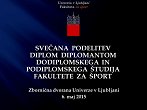



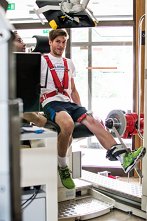


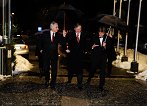
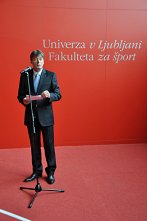



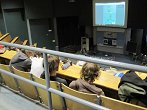


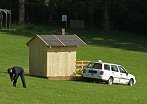
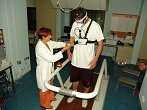




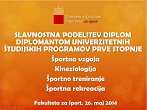







.png)